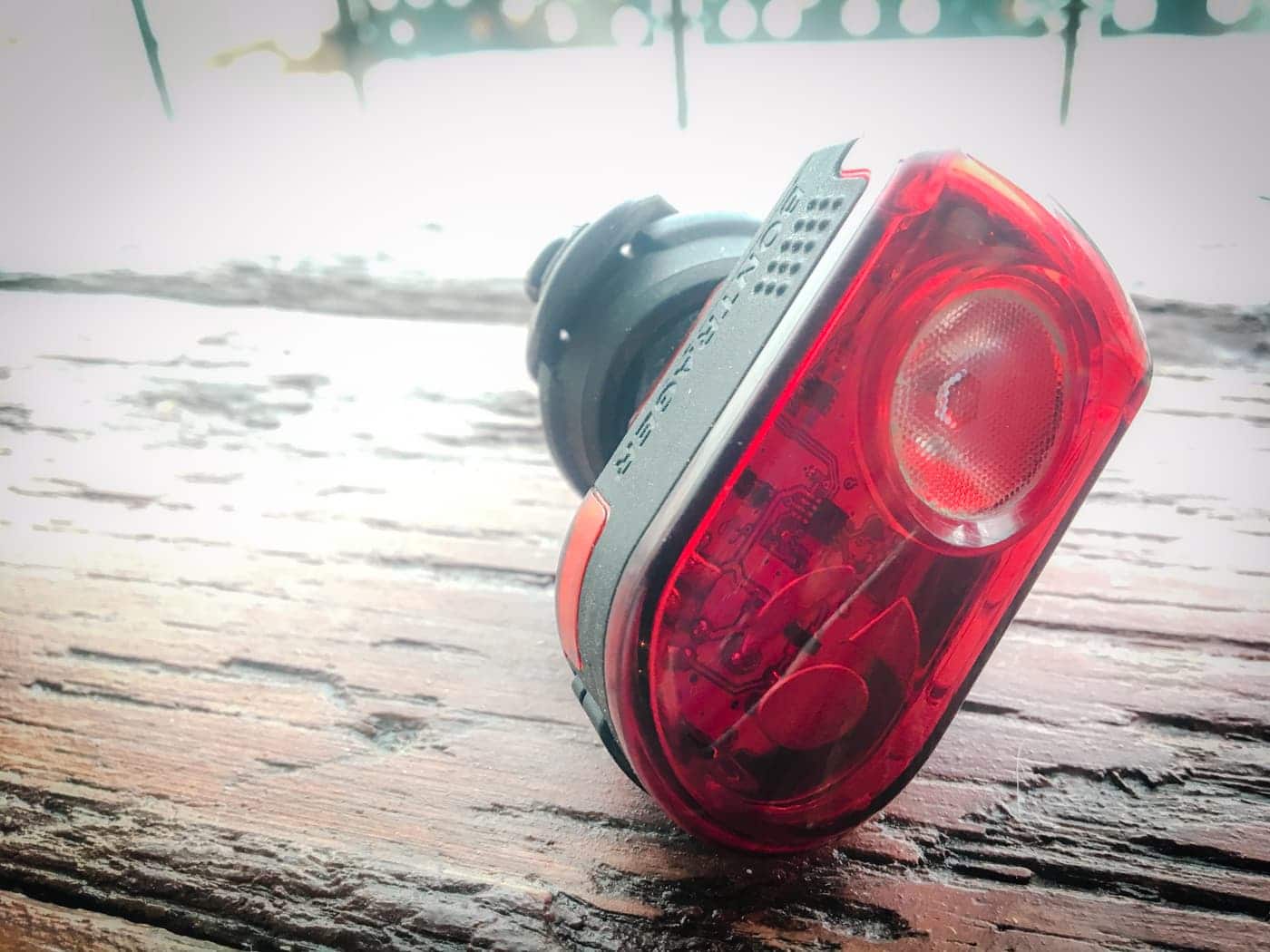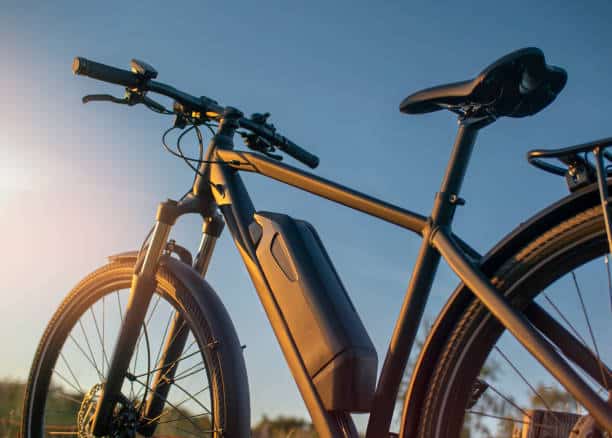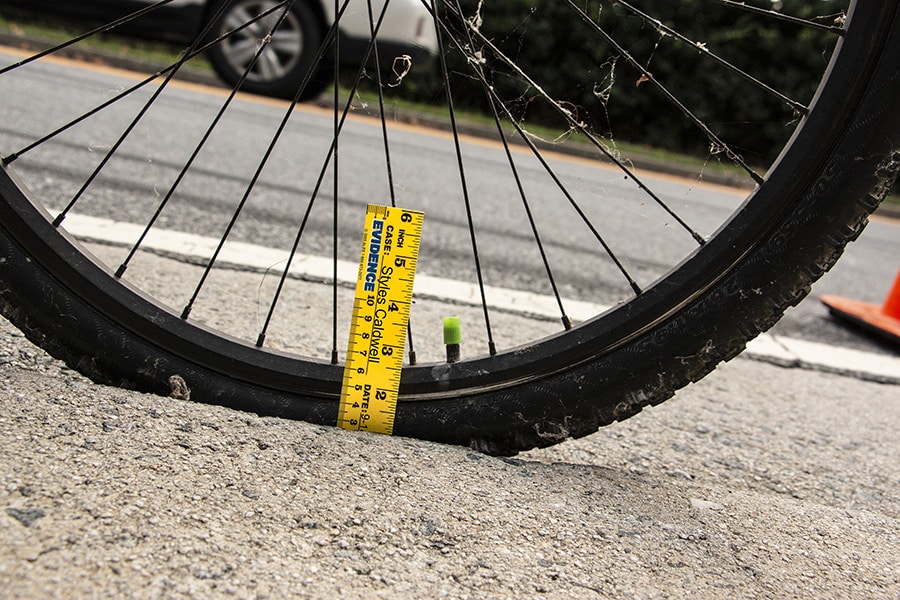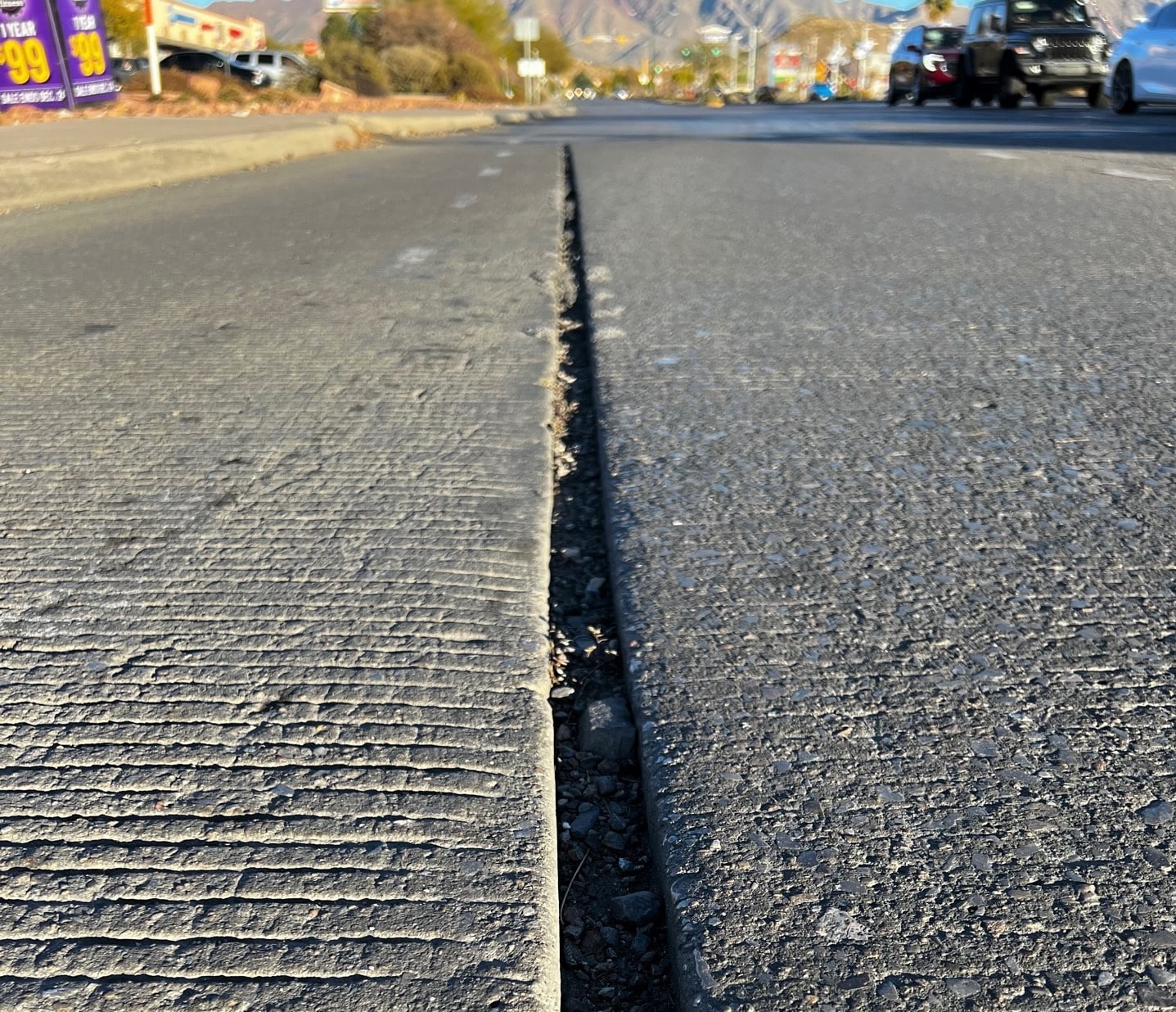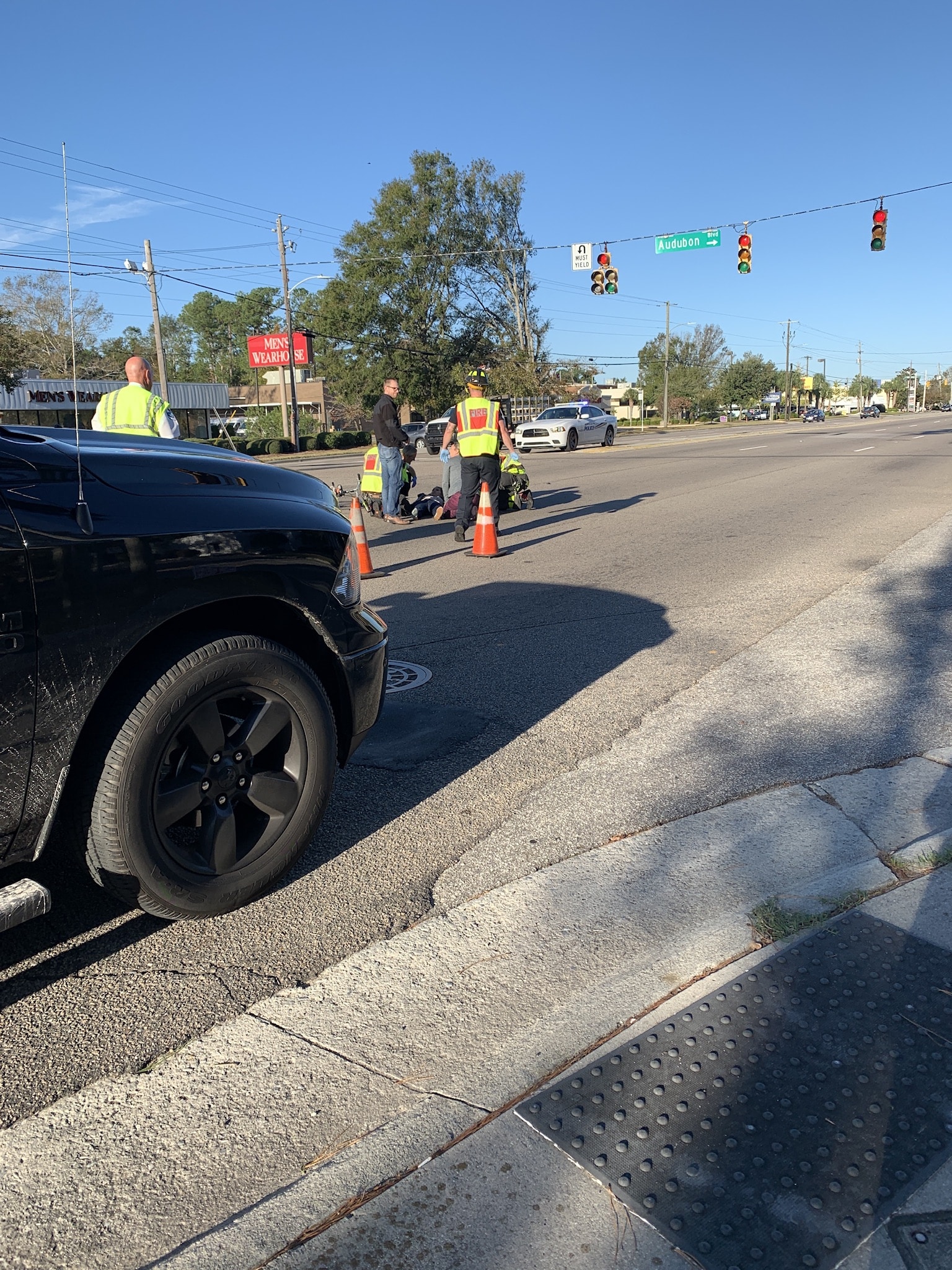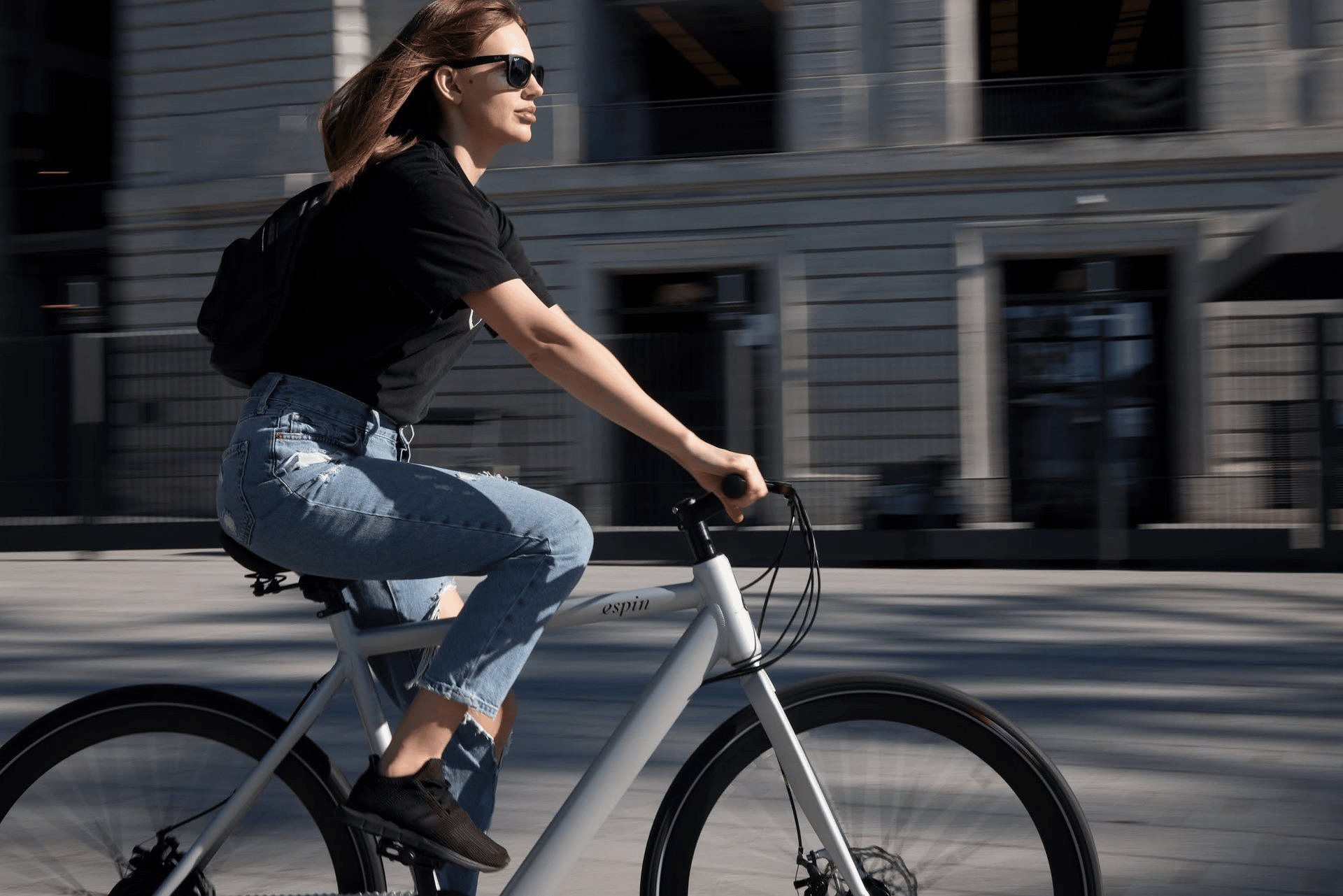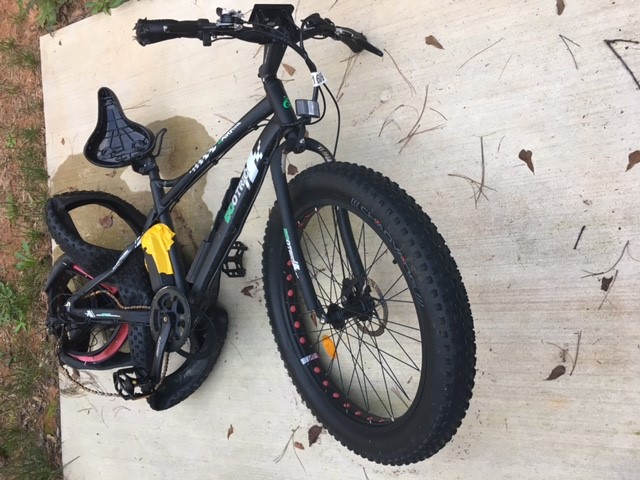Hint: It’s not just at night…
Now that winter has arrived, days are shorter than at any other time of the year, and nights are longer. Adding to this, daylight saving time has ended for the year. All of this means an increased chance that you may be riding in darkness in the morning and evening hours—and that means that you will need to make sure that your bike is equipped with the required lighting equipment, not only because the law requires it, but more importantly because your safety requires it. And this legal and safety advice is not just relevant in the winter, but year-round. After all, you can find yourself riding at night at any time of the year. Even in summer, when days are longer. Maybe especially in summer. So let’s talk about what the law requires, and what it allows (yes, those are two separate things!):
“Active Lighting” and “Passive Lighting”
In Oregon (and every other state), the law requires both “active” and “passive” lighting. Active lighting is what we generally think of when we hear the words “bicycle lights”: It’s lighting that requires you to do something to activate it. Typically, this will mean lighting that is powered by electricity (either battery or generator powered), and that must be turned on before it starts working.
In contrast, passive lighting is lighting that doesn’t require you to do anything to activate it. In other words, passive lighting means reflectors or reflective material. It works as long as a light source is directed at it. But it doesn’t work if no light source is directed at it, it generally doesn’t work well in daylight, and it’s not as bright as active lighting. So why have passive lighting at all? Think of it as both a supplement and a failsafe mechanism for your active lighting. If your bicycle lights have an electrical or mechanical malfunction, or if your batteries are drained, you still have some lighting equipment on your bike. But when lights are required, it’s not legal to ride with reflectors only, so the failsafe function of reflectors is really only useful in the event that your lighting fails and you haven’t realized it yet. More importantly, your passive lighting supplements your active lighting with additional lighting.
All new bicycles sold in the United States must be equipped with reflectors as specified by the Consumer Products Safety Commission. See 16 C.F.R. 1512.16. Used bicycles are not required to be equipped with reflectors, and it is legal to remove the reflectors from your own bike.
In contrast to the federal regulations on reflectors, there are no federal regulations requiring bikes to be equipped with lights. This means that it is up to you to decide whether you want to buy lights, and if so, what kind and how many. It is usually perfectly legal to ride your bike without lights during daylight hours, but if you are riding during “limited visibility conditions,” the law requires you to be equipped with at least one light. There are no exceptions in the law for “I didn’t plan to be out riding in the dark,” or for “somebody stole my light,” or even for “my battery stopped working.” If you’re riding in “limited visibility conditions,” you are required to have a light.
So what exactly is required lighting for your bike? The specific requirements are found in The Oregon Vehicle Code. See ORS 815.280.
Active Lighting
In Oregon, every bike operated during “limited visibility conditions” must have lighting equipment that shows a white light visible from a distance of at least 500 feet to the front of the bicycle. Any bicycle light you can find on the market probably meets this test. Other types of lights may or may not meet this requirement (in other words, if it’s not specifically a bicycle light, you should test to make sure that it shows a white light at least 500 feet to the front of the bicycle). The light can be attached to either the bike or to the cyclist, but must be visible at least 500 feet to the front of the bicycle, so be careful how you position the light.
The law also allows you (but does not require you) to equip your bike with additional lighting. For example, a rear light is allowed but not required. Additional lighting must be consistent with the law specifying required lights and reflectors, so a rear light must be red.
One question that comes up sometimes is flashing lights—are they legal? They sure are. Under ORS 816.310, bicycle lights are specifically exempted from the lighting requirements for motor vehicles, and instead are subject to the requirements of ORS 815.280. And since ORS 815.280 does not specifically prohibit flashing lights for bicycles, it is perfectly legal to use flash mode on your bicycle lights.
Passive Lighting
In addition to the required active lighting, Oregon requires that every bike operated during “limited visibility conditions” must have “a red reflector or lighting device or material of such size or characteristic and so mounted as to be visible from all distances up to 600 feet to the rear when directly in front of lawful lower beams of headlights on a motor vehicle.” This section of the law requires you to have either a red reflector or a red light, but does not require you to have both. And in Oregon, the law lets you decide whether to attach your light or reflector to the bike, or to yourself. The only requirement is that the light or reflector must be visible up to 600 feet from the rear, so be careful how you position your light or reflector.
What if you have lights but want reflectors as a backup? Some rear lights function as both a light and a reflector, so if your battery runs low, you are still riding legally, because your light is also a reflector. Alternatively, you can equip your bike with both lights and reflectors. Both options are perfectly legal.
What about wearing additional reflective material, or equipping your bike with additional reflectors or reflective material? Perfectly legal in Oregon, as long as your reflectors are consistent with the law (this means that front reflectors must be white, and rear reflectors must be red).
When do you need to have lighting on your bike?
In Oregon, the required lighting equipment must be used during “limited visibility conditions.” It’s important for you to understand exactly what that means. By definition in Oregon law, “limited visibility condition” means “any time from sunset to sunrise; and any other time when, due to insufficient light or unfavorable atmospheric conditions, persons and vehicles are not clearly discernible on a straight, level, unlighted highway at a distance of 1,000 feet ahead.” (see ORS 801.325)
This means that you must be equipped with the required lighting equipment if you are riding at any time between sunset and sunrise, and at any other time when visibility conditions prevent you from seeing at least 1000 feet ahead. Such limited visibility conditions could include fog, rain, snow storms, dust storms, smoke, volcanic eruptions, solar eclipses, or any other condition that creates limited visibility.
You are not required to have lighting equipment during daylight hours when visibility conditions are not limited. But if you want to ride with lights on during daylight, it’s legal to do so.
What happens if I don’t have the required lights and reflectors?
If you are riding during “limited visibility conditions” and you don’t have the required lighting equipment, law enforcement officers can stop you and write you a traffic ticket for “violation of bicycle equipment requirements.” Currently, if you are ticketed, the fine can range from a minimum of $60, to a maximum of $250, with a $110 fine being the amount you would pay to settle the citation without appearing in court. Alternatively, in at least some Oregon cities, cyclists have the option to attend traffic school in lieu of paying a fine. Once you have completed the class, your fine will be dismissed.
But a traffic fine is not the most serious consequence you face if you ride without lights when the law requires them. From a personal safety standpoint, lights are an important safety precaution. A Consumer Products Safety Commission study found that 46 percent of all cycling fatalities happen at night, while only 8 percent of the cyclists involved in these collisions were equipped with lights. These figures indicate that lack of conspicuity (the ability to be seen) was a factor in most nighttime fatalities.
And from a legal perspective, if you are riding without lights at night or during other periods of limited visibility, and are involved in a bicycle accident, the driver’s insurance company will attempt to blame you for the accident. As an experienced Oregon bicycle accident lawyer, I have seen countless attempts by insurance companies to attempt to get out of paying fair compensation to an injured cyclist. They will look for any opportunity to deny your claim, and if you are breaking the law and are injured by a negligent driver, you will be facing an uphill battle to be fairly compensated for your injuries. Of course, nobody wants to be injured, but in case something does go wrong, you can help protect your rights by making sure that you have the required lighting equipment when you ride.
***
For more information about traffic tickets, see Oregon Cyclists With Traffic Tickets Can Attend Traffic School.
For more information about bicycle accidents, see Insurance Advice for Oregon Bicyclists and What To Do If You Are Involved In An Oregon Bicycle Accident.



